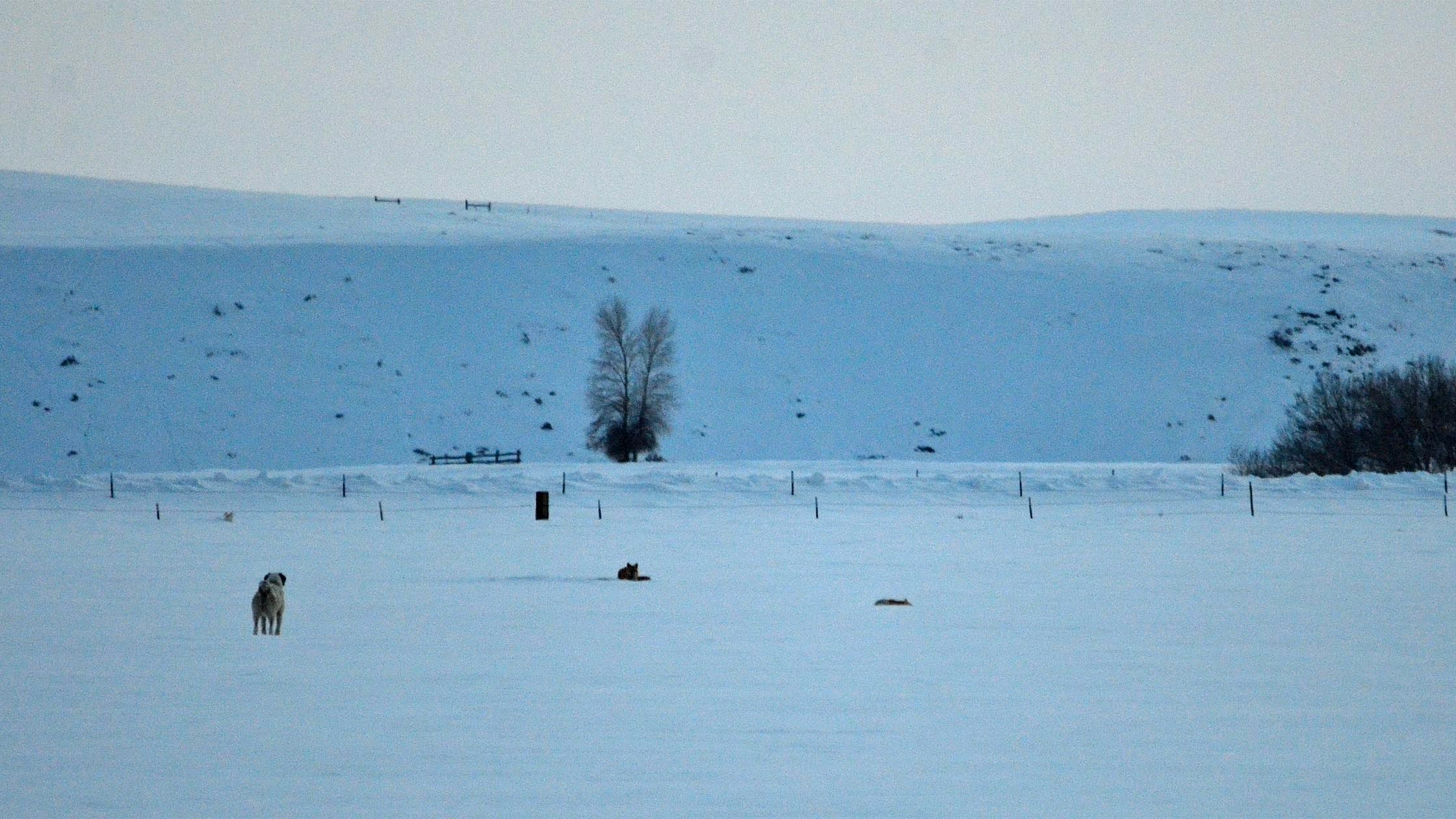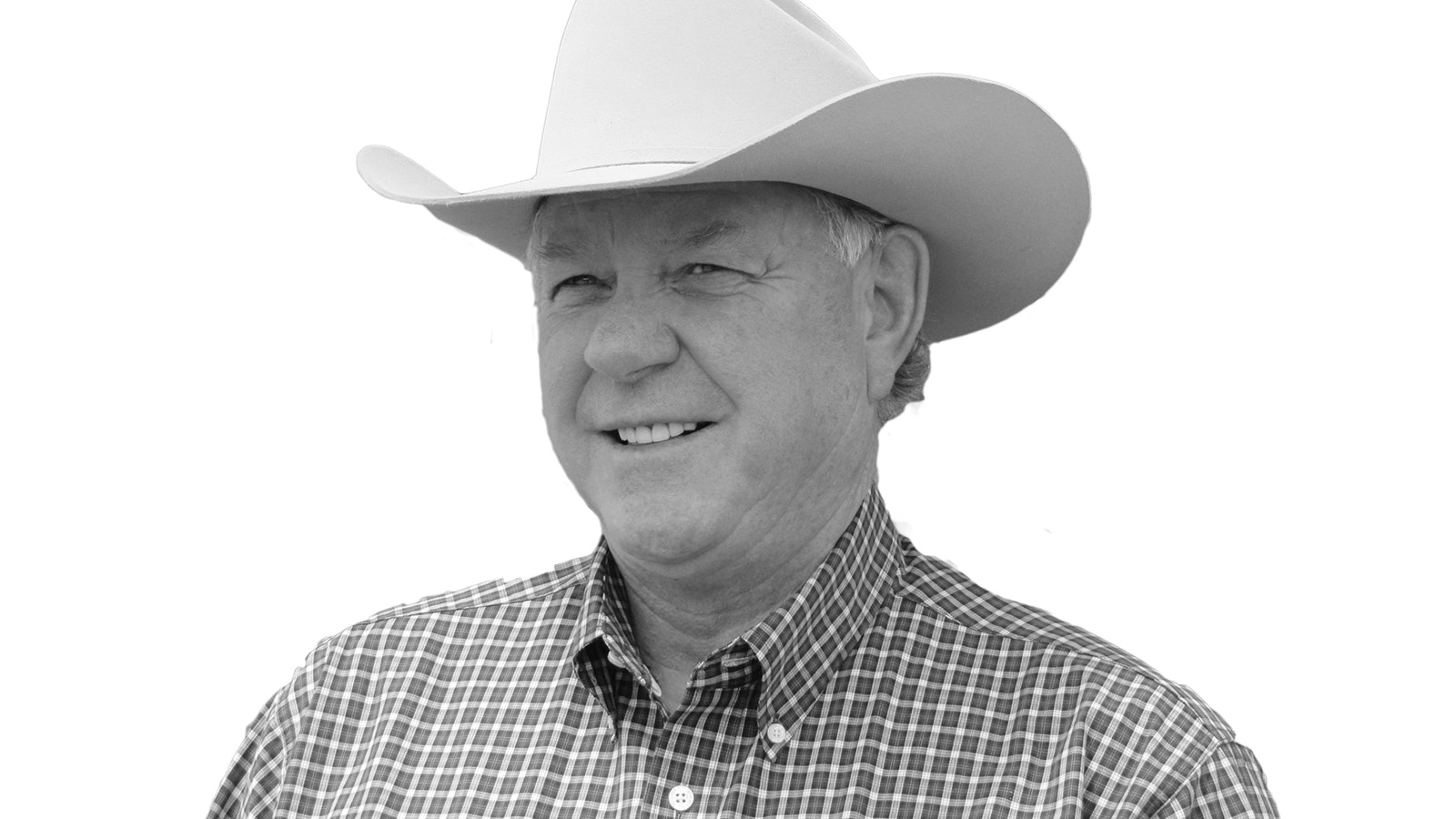It was -35° one early February morning when I sat down at my computer to check on the happenings of the Wyoming Legislature. The horrendous wrecks and resulting I-80 road closure reinforced the critical nature of our state’s citizen legislature in continuing to provide online access to their activities. During winters like this one, I’m happy to forego the winter trail to Cheyenne, preferring to watch the proceedings online.
As I waited for the livestream to load, I looked out the living room window to see what was happening on the range. We’re having a deep snow winter, and it’s been fascinating to watch how animal populations respond to changing conditions. In mid-January, hundreds of mule deer finally migrated away from the ranch, trudging through chest-deep snow to move south, seeking feed that is easier to access.
That was just a few weeks after a ruckus from our ranch dogs led me to a porcupine making its way through the snow behind the sheep pen, traversing across the sagebrush flat toward the much better selection of trees located in the river bottom. Fortunately, I was able to get all the dogs away from our quilled friend before any of the dogs attempted to grab it. Keeping the dogs at bay, I escorted the porcupine to safety, following its unique trail through the snow.
But as I looked out the window that February morning, I spotted the red foxes, my daily entertainment those last few weeks. The three foxes were curled up with their noses in their tails against the cold, sleeping atop the snow in the sunshine. Two of the foxes stayed together, and since it was their mating season, I assumed they were a mated pair. But a few hundred yards away was another fox that spent its time alone. Although the fox pair and the solitary fox could see each other, I never saw them interact.
The foxes moved little during the day, becoming active only after darkness began to settle across the landscape. I find their trails through the snow in the mornings while we’re out forking hay for the sheep.
During most winters, we provide hay to our sheep flock to supplement their grazing on winter range. But the deep snows starting in November put an end to their foraging, so the sheep flock is existing entirely on fed hay. Each morning we plow a fresh trail through the snow, fork the flakes of hay into the trail, and then turn the sheep onto the feedline. After the sheep clean up the hay on these short winter days, the flock makes its way back toward their night pen, where they usually wait until it’s time to close the gates for the night.
Some of the livestock guardian dogs sleep near the night pen, but two of the dogs usually trot out the driveway to the haystack and spend the night atop the hay. These large dogs serve as sentinels against predator disturbance, but also keep deer, elk and moose from raiding the hay meant for the sheep.
Shortly after nightfall, the jackrabbits arrive. Numbering in the dozens, the jackrabbits congregate on that day’s feedline to feast on the alfalfa stems and leaves remaining on the ground left by the sheep. Tracks in the snow off the feed line show the trail used by the foxes that come to stalk the gathering of jackrabbits, and occasionally we’ll find the remains of their kills. But the foxes return to their open bedding spots in the snow before sunrise, with their trails atop the crusted snow the evidence of their movements during the night.
The livestock guardian dogs know the foxes are present but tend to ignore the small predators. The daybeds used by the foxes are out in the open country with no cover, and I suspect that the dogs knew of their presence long before I did. The dogs don’t bother to give chase since the small predators don’t pose a threat to our adult ewes. Besides, the snow crust wasn’t strong enough to hold large dogs and they would be left behind to flounder in the deep snow.
The conditions are significantly different than last year’s fox mating season. Back then, a fox pair spent most nights on the rocky ridge above our house, with the vixen’s murderous screams driving the dogs to exhaustion as they sought out the source of the shrieking. This winter’s blanket of deep snow muffled such antics, with only the animal trails indicating the events of the night.
As the winter weeks ticked by, two of the foxes disappeared, apparently moving on to better hunting elsewhere. Warmer weather caused some settling of the snowpack and created a hard crust, making travel easier for larger animals. We were surprised when a dozen pronghorn antelope that had wintered in a brushy draw ventured out onto the flat and headed south last week. But each day, I looked out and found one red fox on its daybed. Every now and then, a second fox would appear nearby, and then move on.
On Sunday morning, I scanned the landscape and found the fox on its daybed, but commented to Jim that it seemed to be oddly positioned. Something about it just seemed off. I forgot about it until sunset, when Awbi, one of our livestock guardian dogs, started raising a ruckus. I tracked her in the dim light as she tracked a beautiful red fox toward the fox day bed.
The fox traveled across the snow before stopping a few dozen feet from the occupied fox daybed, where the resident fox lay dead. I watched Awbi as she approached for a closer look, and was astounded when she stopped short. Awbi stayed positioned between the foxes and the distant sheep flock, but didn’t encroach, leaving the live fox to its vigil near its dead kin.
I’m reminded once again that as our livestock guardian dogs share the range with wild creatures, of course they distinguish individual wild animals from other wild animals. They know their neighbors on this shared range. Just as I can pick out a particular cow moose from other moose in the area, the dogs do the same, but in their role as guardians, the dogs have a much closer relationship and knowledge of their wild cousins. Awbi has a much greater understanding of what happened with the foxes than I, a mere human observing from a quarter-mile away.
By morning, only the dead fox remained. In the early afternoon, two eagles arrived to feed on its carcass, followed by a few ravens intent to scavenge any remaining scraps.
By nightfall, there was little evidence of the life that had been lived and ended in that spot, except for a small dent in the snow, the melted fox daybed.
Cat Urbigkit is an author and rancher who lives on the range in Sublette County, Wyoming. Her column, Range Writing, appears weekly in Cowboy State Daily.





